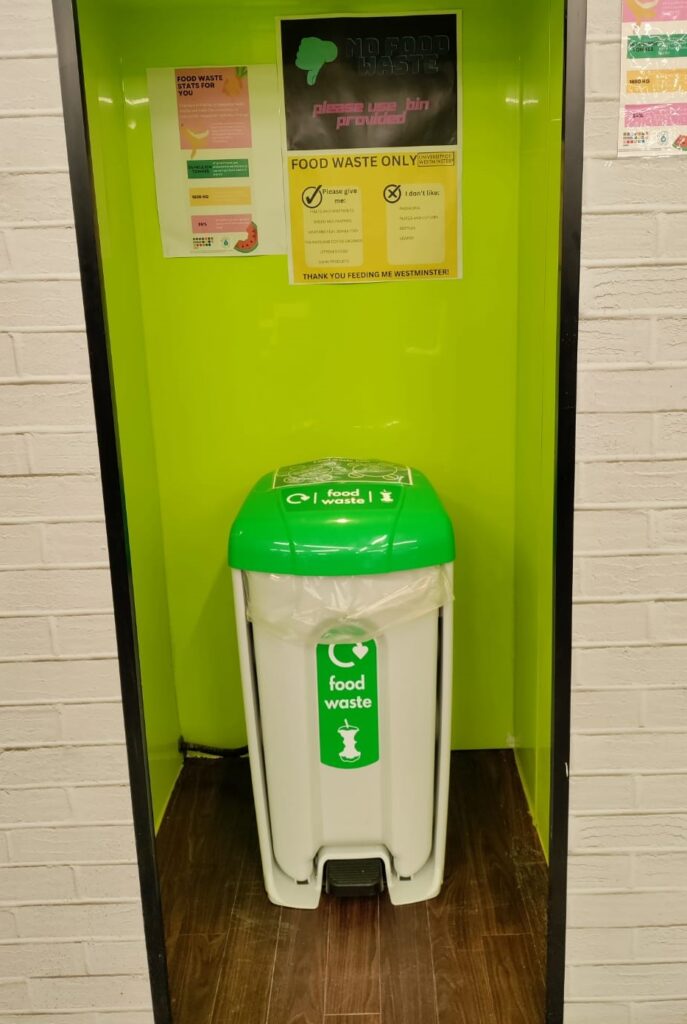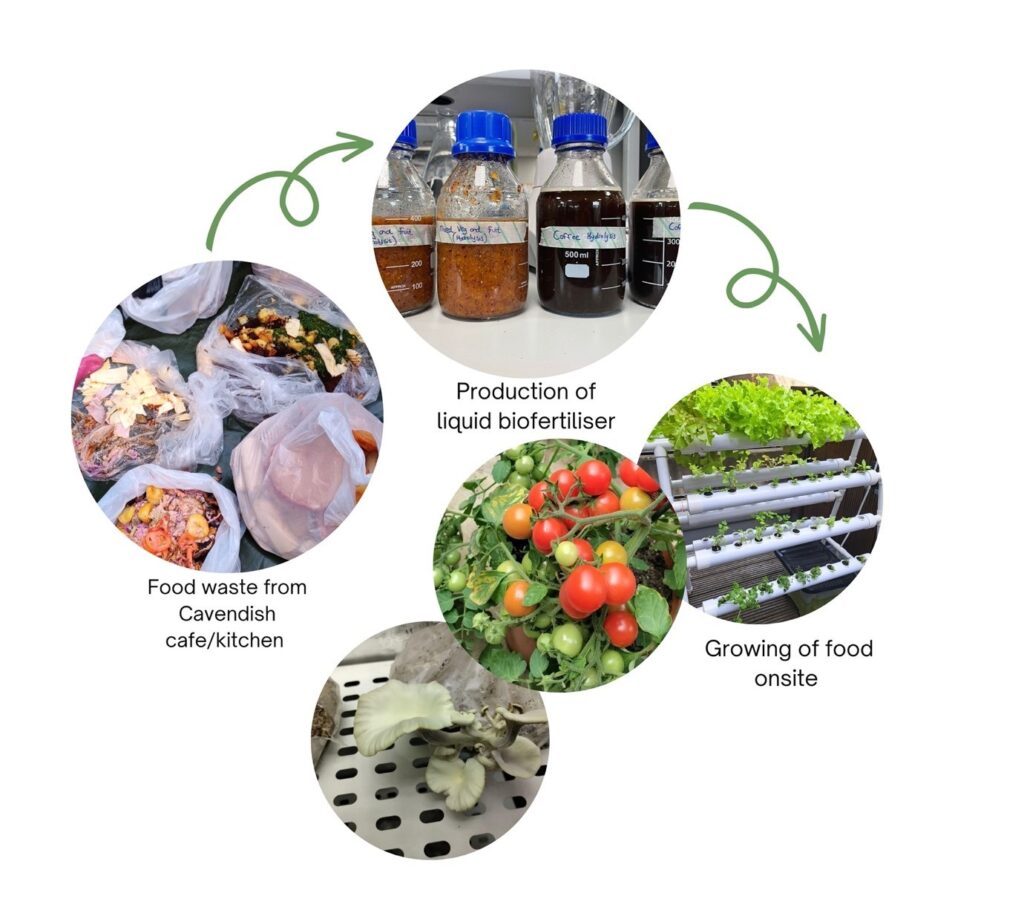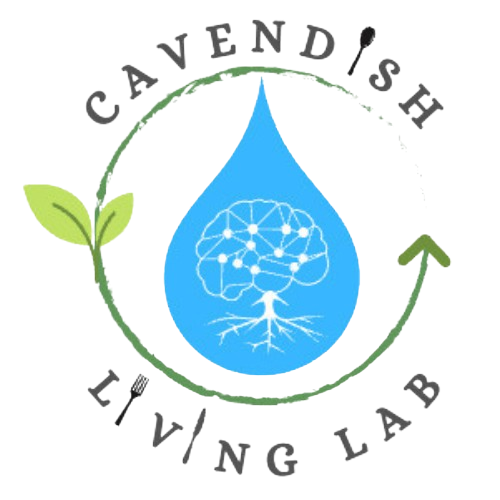Food waste
In 2018, the United Kingdom generated approximately 9.5 million tonnes of food waste, as reported by the Office for National Statistics (ONS). This amount translates to an average of 143 kilograms per person across the country. Food waste is a significant issue globally, with serious environmental, economic, and social implications. The substantial production of food waste highlights the need to tackle this issue effectively.
“36 million tonnes of greenhouse gas emissions is estimated to come from food waste in the UK”
What did the Cavendish Living Lab do?
The kitchens of the University of Westminster generate approximately 1,880kg of food waste annually, which is sent to an anaerobic digester for biogas production. However, food waste produced by students is mixed with general waste. Our food waste audits revealed contamination in recycling bins, prompting action. We collaborated with the Westminster Sustainability team to introduce food waste bins for students, aimed at reducing landfill waste and greenhouse gas emissions. This initiative is currently being trialled in the Cavendish campus cafeteria.

The Circular Model

The circular economy model is a sustainable approach that aims to minimise waste and maximise the efficiency of resources by promoting practices such as recycling, reusing and repurposing materials. This model differs from the traditional linear economy, where resources are extracted, used and disposed of as waste.
The Cavendish Living Lab explored the use of food waste from campus to boost food growth and support a circular model.
Students conducted independent research on food waste utilisation, which resulted in implementing several ways to convert food waste into bio-fertilisers. Our team installed a compost bin and introduced edible plants in the planters with soil. Additionally, liquid bio-fertilisers from waste were probed for use in hydroponic systems. A variety of plants ranging from coriander to tomatoes and lettuce to pak choi were grown on campus and donated to the local Foodbank feeding into the circular economy model.
A discrete approach was taken for growing mushrooms in the laboratory settings, which also proved to be successful.
Repurposing food waste instead of disposing of it in landfills is an effective way to reduce greenhouse gas emissions and minimise environmental. Using methods such as composting, biofertiliser production, food growing and donation we can ensure that this valuable resource is put to good use rather than contributing to damage caused to the environment.
References
A review of household behaviour in relation to food waste, recycling, energy use and air travel – Office for National Statistics (no date). Available at: https://www.ons.gov.uk/economy/environmentalaccounts/articles/areviewofhouseholdbehaviourinrelationtofoodwasterecyclingenergyuseandairtravel/2021-11-01 (Accessed: 22 May 2024).
Geissdoerfer, M. et al. (2017) ‘The Circular Economy – A new sustainability paradigm?’, Journal of Cleaner Production, 143, pp. 757–768. Available at: https://doi.org/10.1016/j.jclepro.2016.12.048.
